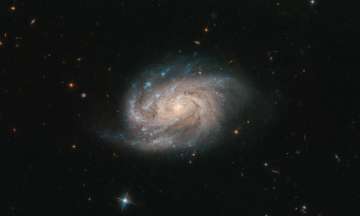NASA's Hubble Space Telescope has captured an image of a galaxy, which is about 200 million light-years away. The galaxy, named NGC 1803 is in the southern constellation of Pictor (the Painter’s Easel), NASA said. The image of the galaxy, captured by ESA Hubble Space Telescope was described as 'bright, somewhat blob-like object' by NASA.
NGC 1803 was discovered in 1834 by astronomer John Herschel, the US space agency said. Herschel is a big name in astronomy; John, his father William and his aunt Caroline all made huge contributions to the field, and their legacies remain today.
William systematically cataloged many of the objects he viewed in the night sky, named many moons in the solar system, discovered infrared radiation and more.
Caroline discovered several comets and nebulas. John took this aforementioned catalog of night-sky objects and reworked and expanded it into his General Catalogue of Nebulae and Clusters of Stars.
This was the basis for the cataloging system still used today by astronomers, John Louis Emil Dreyer’s New General Catalogue of Nebulae and Clusters of Stars, or the New General Catalogue for short, NASA said.
This gives rise to the NGC names assigned to a vast number of galaxies — including NGC 1803. This galaxy is one of a galactic pair.
It was described by Dreyer as being “faint, small, [and] round,” and located near to a very bright star to the southeast. This star is in fact the nebulous lenticular galaxy PGC 16720 — not visible in this image.
Also Read | Earth's oldest crater from space rock impact revealed
Also Read | Origin of complex life's secret may lie deep in pacific ocean mud
